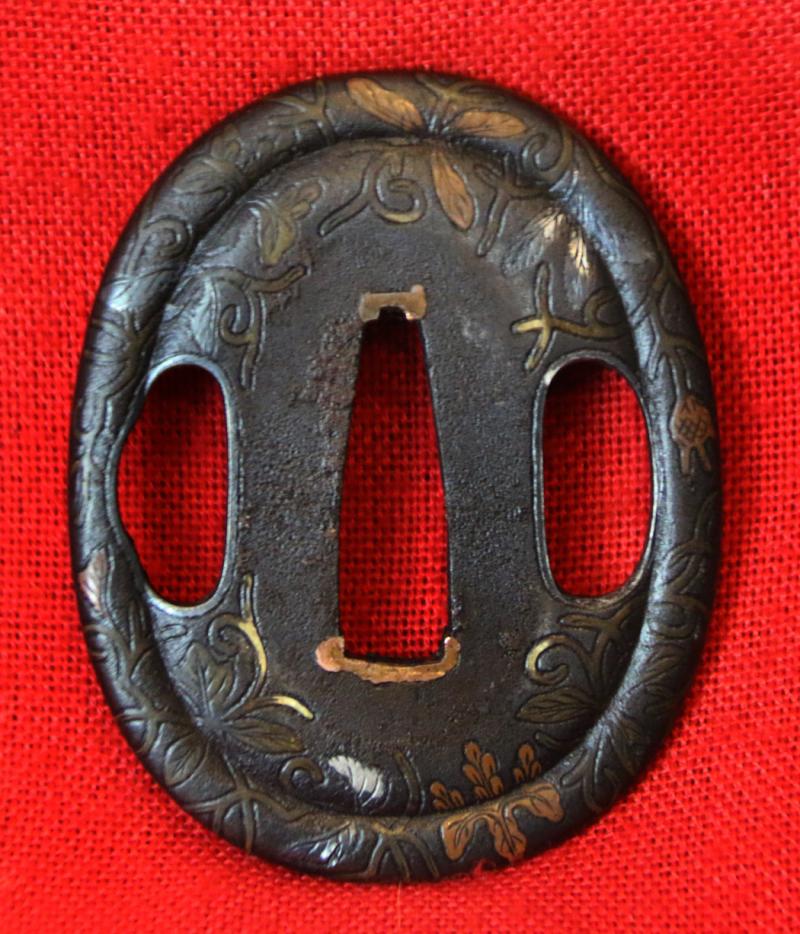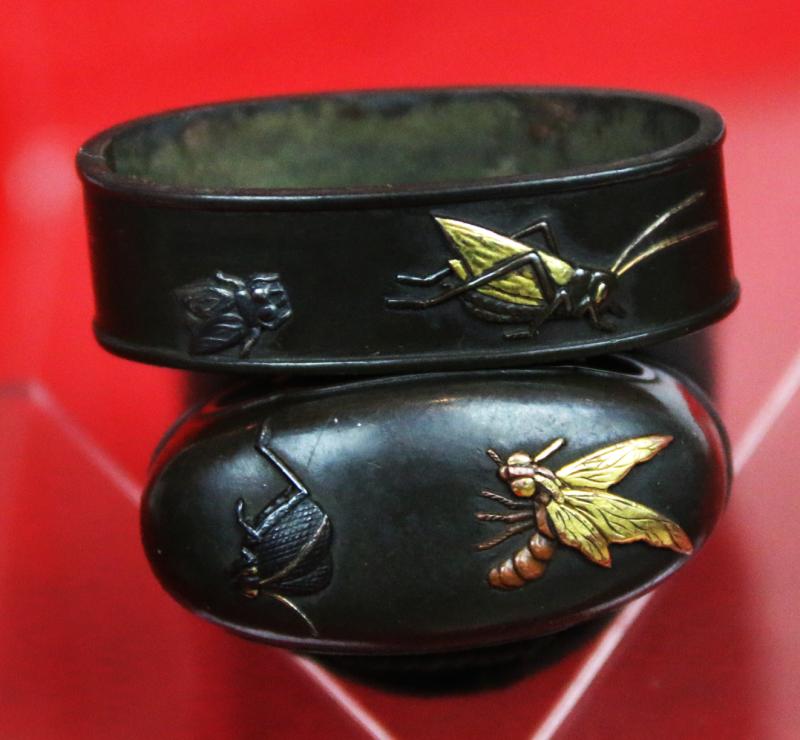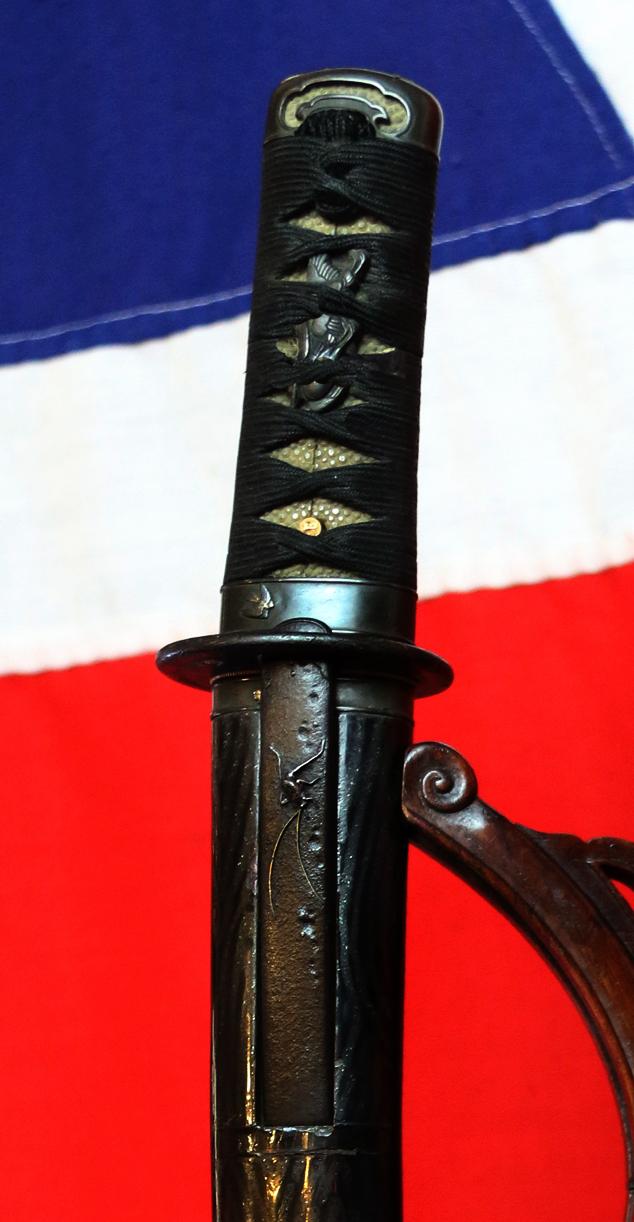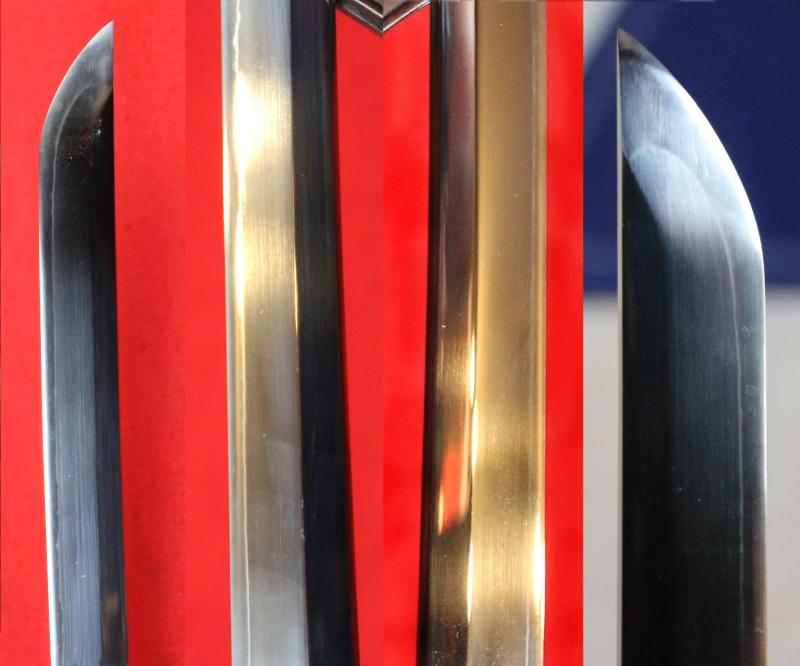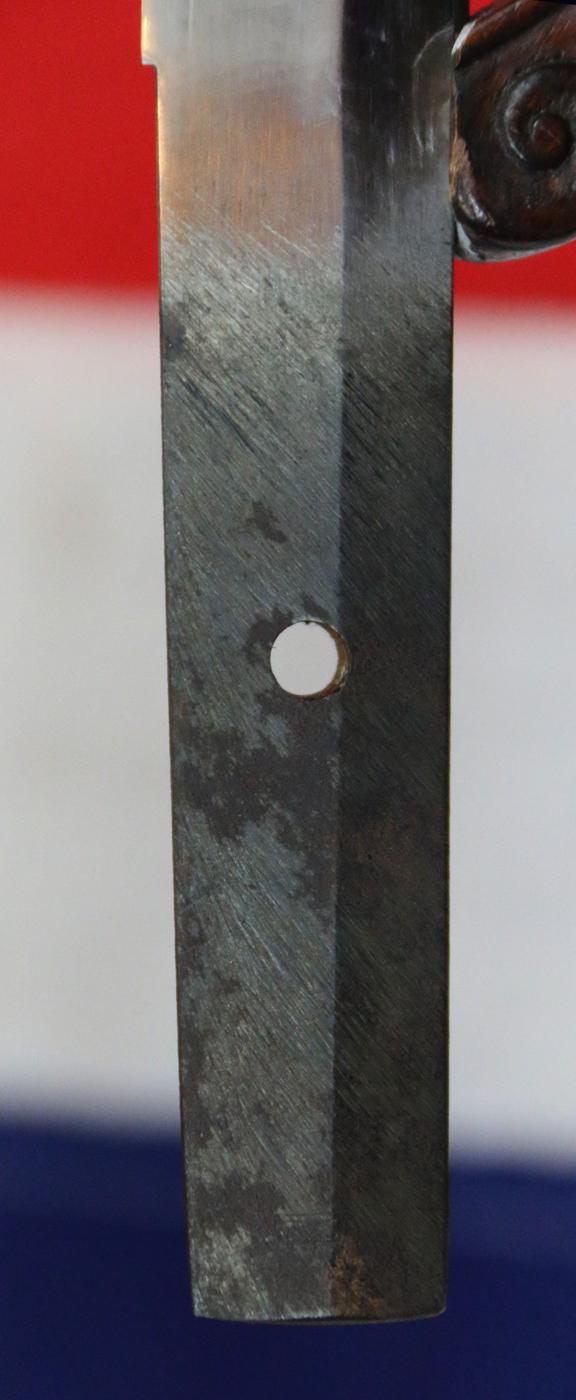A Simply Wonderful Edo Period Samurai Tanto Museum Quality Art-Sword Decorated To The Highest Artistic Standard With Insects, in Carving, Iroe, Taka-zōgan, Zōgan, and Tsuba Inlaid with Hira Zogan with the Imperial Mon of Kiri, Paulownia Leaves
Edo period, 17/19th century 1615-1868 with gold, copper-gold alloy (shakudō), silver, copper, copper-silver alloy (shibuichi) koshirae mounts Fuchi-kashira made of Shibuichi carved and inlaid with shakudō, gold, silver, and copper with the design of insects, butterfly, praying mantis, Suzumushi bell crickets, wasps, and catydid, upon all the fittings
Carving, Iroe, Taka-zōgan, Zōgan. Menuki {beneath the tsuka silk wrapping, of patinated copper cranes in flight.
Fuchi Kashira is a form of Japanese metal fitting of the Japanese sword, which improves the handle’s strength. Fuchi Kashira are a combination of two parts; Fuchi and Kashira. Fuchi was put next to Tsuba (hand-guard), and Kashira was put on the grip bottom. Fuchi Kashira developed not only its practicality but also beauty for the decoration of the Japanese sword.
The tsuba with 'mon' {Japanese clan crest} made from kiri, or paulownia leaves is a pair to another one in the Ashmolean museum at Oxford donated from The A. H. Church Collection of Japanese Sword-Guards (Tsuba) Ashmolean Museum, University of Oxford. It is iron, with multi-metal flat inlay (iro-e zōgan and hira-zōgan), in gold, copper, and silver; inlay engraved; ryōhitsu with silver rims; tang-hole traditionally plugged, for snug fitting upon the nakago, with soft copper.
The paulownia crest mon is often associated with the Japanese imperial family. It was used as the official seal of the emperor before the chrysanthemum crest became the primary symbol.
Signifying nobility and honour, historically, the paulownia crest mon was granted to individuals and families by the imperial court as a mark of honour and distinction. It symbolizes high status, nobility, and honour.
Iron kozuka {a small utility knife fitted in the saya pocket} Edo Period, 18th/19th century 1615-1868, hand chiselled, depicting a closeup landscape with small rocks and leaves, in metal inlay, and a central onlaid full relief, takebori, shakudo Suzumushi (bell cricket).
The cricket has been traditionally kept as pets in Japan housed in beautifully decorated cages and carried by their owners. The Suzumushi is well known for its singing and the love of crickets can be found in the many poems written by Japanese poets. One of the great forefathers of haiku Kobayashi Issa (1762-1826) wrote: -
flat on his back,
chirps his last song.
Grasshopper’s song in
moonlight – someone’s
survived the flood.
At the altar
in the chief place,
cries a cricket.
-Issa (Translated by L. Stryk)
Insects in general have been celebrated in Japanese culture for centuries. The Lady Who Loved Insects is a classic story of a caterpillar-collecting lady of the 12th century court; the Tamamushi, or Jewel Beetle Shrine, is a seventh century miniature temple, once shingled with 9,000 iridescent beetle forewings. In old Japanese literature, poems upon insects are to be found by thousands, Daisaburo Okumoto is director of the Fabre Insect Museum. An avid insect collector and a scholar of French literature, he has translated many of Fabre's works. He ascribes the popularity of insects in Japan to national character. It seems like Japanese eyes are like macro lenses and Western eyes are wide-angle, he says. A garden in Versailles, it's very wide and symmetrical. But Japanese gardens are continuous from the room and also very small. We feel calm when we look at small things. The medieval Japanese monk Yoshida Kenko put it this way: “If man were never to fade away like the dews of Adashino, never to vanish like the smoke over Toribeyama, how things would lose their power to move us”
Finest urushi Edo lacquer work saya in black interspersed clear lacquer on abilone shell in a wave pattern.
Blade length, tsuba to tip 11.25 inches, full length in saya 16.75 inches
Code: 25637
5950.00 GBP



